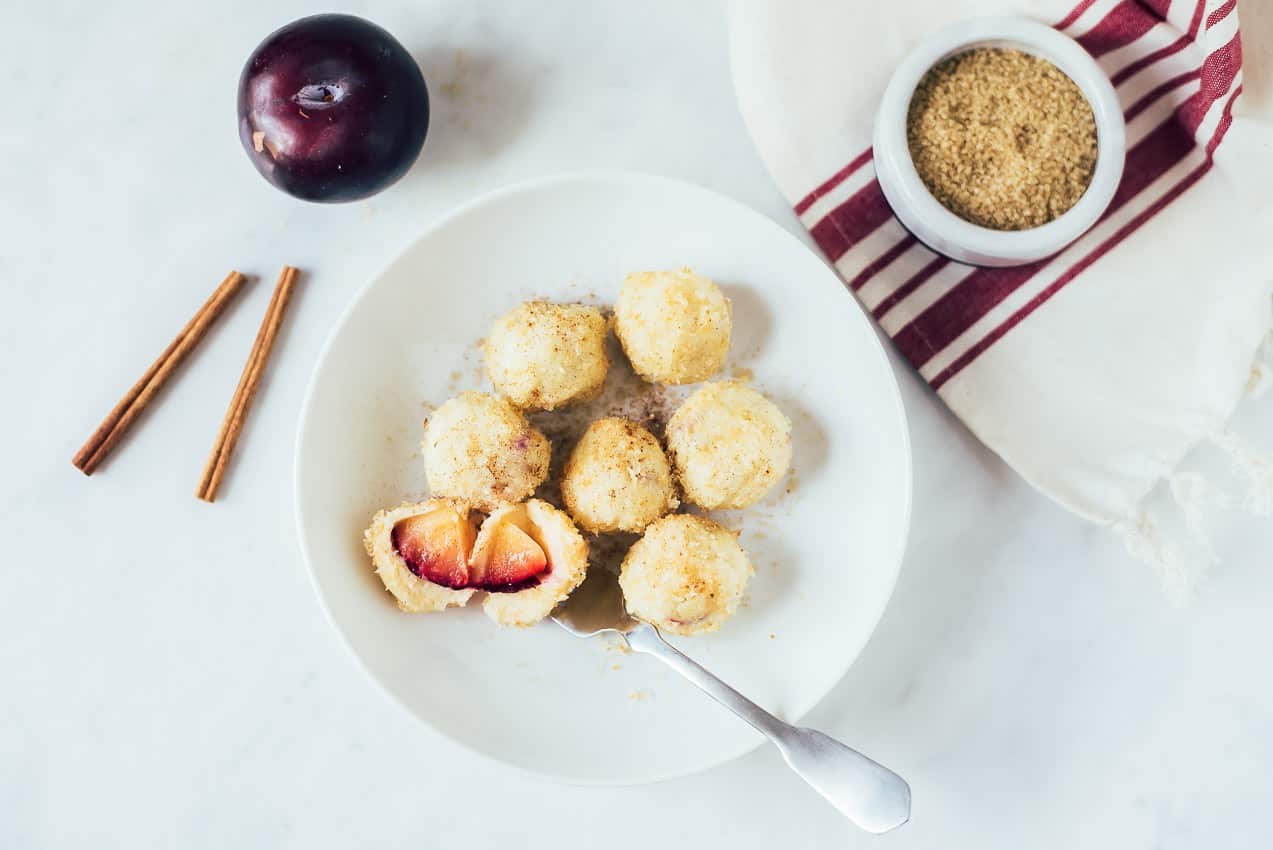 Gnocchi for dessert? It’s totally possible.
Gnocchi for dessert? It’s totally possible.
When I packed up all my things to come to the States this past June, I struggled in deciding what to bring and what to leave behind. Short of squeezing my family, cat, and dog into a shipping box, I managed to sort some of the things that would make me feel less homesick once overseas. Italian clothes, shoes, and purses were first on the list (duh!). Then came the “shippable” food ( i.e.: Carnaroli rice, yeast for pizza, Illy ground coffee, Modica chocolate, etc). Then, the fine tablecloth, handmade ceramic bowls and ramekins Tom and I bought during our trips to Tuscany and Sicily. At last, I packed the heaviest things of all….cookbooks! WHAT?? Who, in the Kindle era, needs books so much they ship them overseas?? Ironically, I’m one of the most digitally-adverse people I know, especially when it comes to reading.
Among these cookbooks, I particularly cherish the ones of Friuli Venezia Giulia cuisine. Having them here with me in Virginia really makes me feel like I’m a little bit closer to home. Granted I’m familiar with most of the dishes since I basically grew up eating them, I every now and then try new ones…just for kicks.
Gnocchi di Susine (plum-filled gnocchi) is one of those dishes I’ve always been curious about. The word “gnocchi” made me think of a main entree, while “plum” clearly pointed to the dessert direction. So the big question in my mind was: would this dish be more on the sweet or the savory side??
These dumplings are very popular in Trieste — the capital city of Friuli Venezia Giulia that was long ruled by Austria and the Austro-Hungarian Empire. It’s no surprise this dish also belongs to the cuisines of other European countries that were once part of the same empire. Gnocchi di Susine are pretty much the same across the borders, only changing their name according to the local language — “Zwetschgenknödels” in German, “Knedle sa sljivama” in Croatian, “Szilvas Gomboc” in Hungarian, “Svestkove Knedliky” in Czech, “Galuste cu prune” in Romanian, “Slivkove Knedliky” in Slovakian, etc.
The very interesting fact is that outside of Italy this dish is considered a dessert, while in Trieste it’s often listed under the entrée section of the menu, right next to spaghetti alla busara and other savory local dishes. THAT confused me even more. I HAD to see for myself.
This recipe calls for “susine” — i.e. Damson plums, the ones with a small and oblong shape, purple skin and yellow flesh. Unfortunately I no longer have an albero di susine in my yard and I wasn’t able to find that exact kind at the grocery store, so I had to make do with black plums.
I cut the plum in small pieces, stuck them inside a small ball of gnocchi dough while, on a separate pan, I toasted a handful of breadcrumbs and melted some butter. Once the gnocchi were cooked, I tossed them in the butter sauce. I took a bite. Sweet, definitely sweet. I thought about bringing them to the savory side by adding parmesan cheese, but I held that thought and I instead went for a generous sprinkle of cane sugar and cinnamon all over. They’re fun to eat with their little round shape and their surprising sweet heart of fruit. These dumplings definitely belong on the dessert menu!
I’m almost certain the people of Trieste purposefully gave importance to Gnocchi di Susine by serving it as an entrée, as a way to celebrate their Austro-Hungarian heritage of which they’re very proud. Trieste has a very unique identity and has been a crossroads of cultures over the centuries but the Mittel-European influence is definitely the strongest of all.
If you’re interested in learning more about Trieste and its interesting history and background, check out this excellent article from Saveur. Now, it’s time for me to let you get to this SWEET recipe! Enjoy.
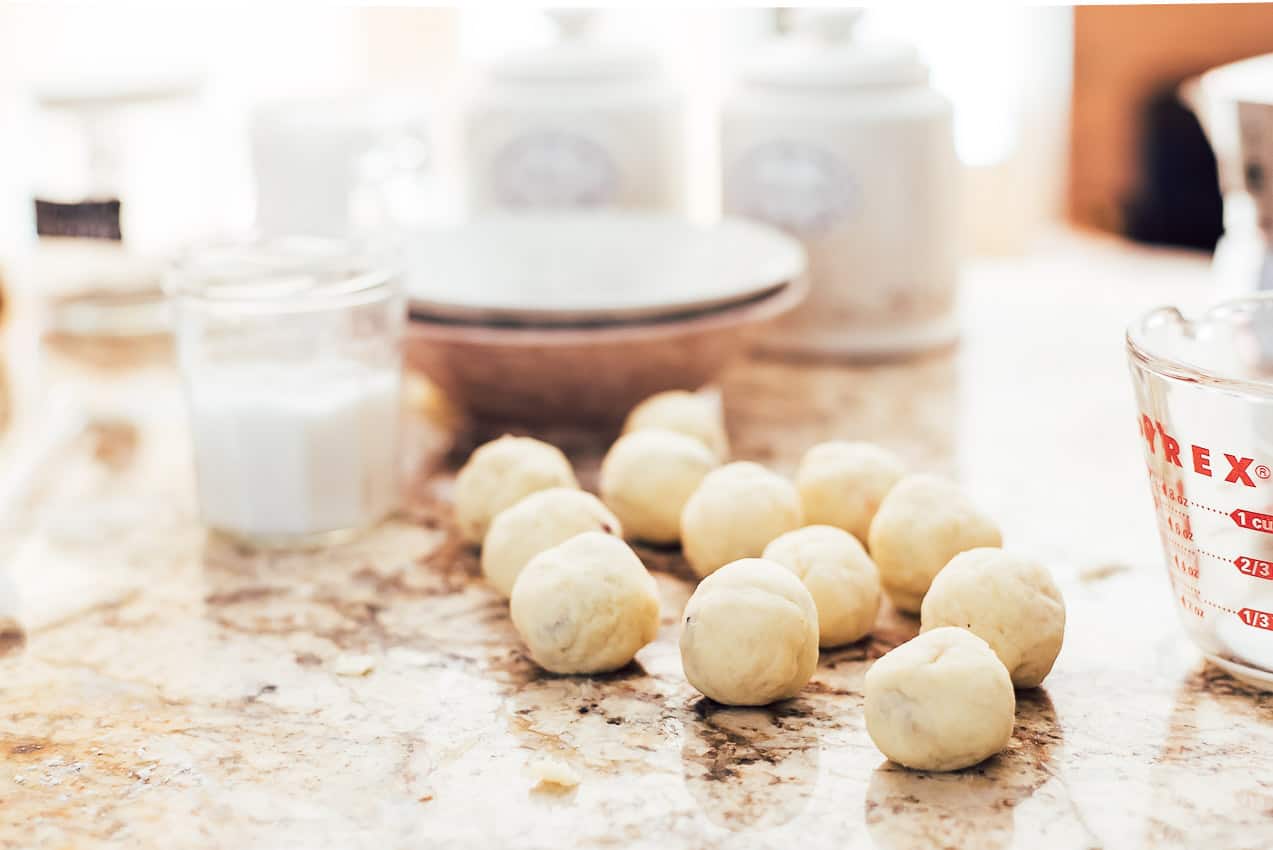
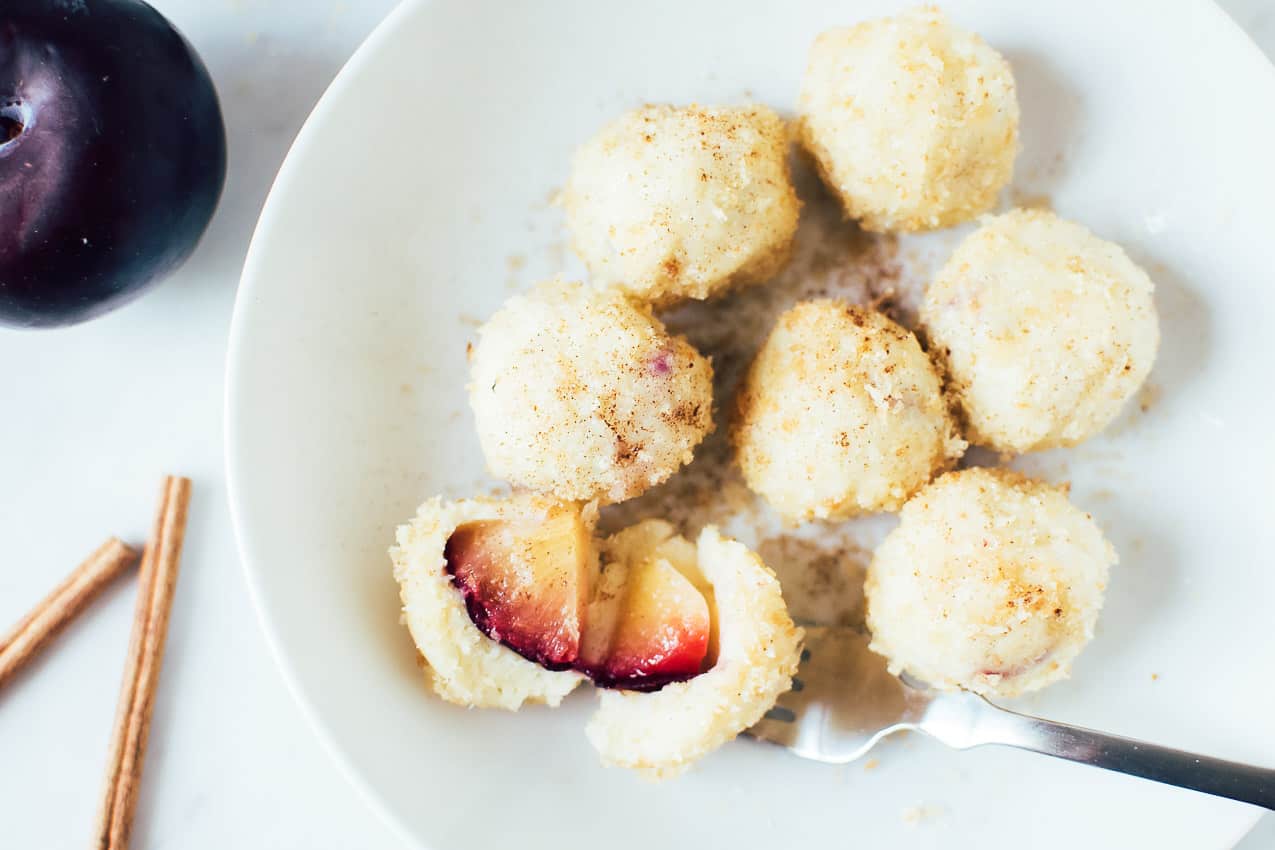
- 4 black plums (*if using Damson plums see notes below)
- 1 kg potatoes
- 350 g (12.3 oz or 2¾ cup) all-purpose flour
- 1 egg
- whole milk, as needed
- salt
- 100 g (3.5 oz or 7 Tbsp) butter
- 40 g (1.4 oz or ¾ cup) breadcrumbs
- ground cinnamon
- cane sugar
- Cut plums into small 1-inch pieces and sprinkle them with cane sugar. Set aside.
- Prepare the dough by boiling potatoes in water until tender. Once your potatoes are cooked through, drain them and remove their skin. Mash potatoes very well, until all lumps are gone. Let cool down a bit.
- Add egg, salt, flour and just enough milk to obtain a soft, workable, smooth, and non-sticky dough. Do not over knead your dough.
- Take a piece of plum and push it inside a piece of dough of similar or slightly bigger size. Roll dumpling between the palms of your hands until you obtain a smooth round shape. Make sure the plum is completely invisible from the outside. Place on lightly floured tray and repeat this last step until you use up all your dough.
- On a wide non-stick pan, melt butter over medium heat. Add breadcrumbs, a nice sprinkle of sugar and cinnamon. Let toast until golden brown, then remove from the heat.
- Bring a big pot of salted water to a boil. Cook Gnocchi di Susine in batches. Once they rise to the surface, let cook for a couple more minutes. Transfer them with a slotted spoon to the pan containing the butter/breadcrumb sauce. Turn on the heat and briefly cook gnocchi in the sauce for 1 or 2 minutes.
You might want to check out other (savory) gnocchi recipes. Have you ever tried to make gnocchi di ricotta or the more classic gnocchi di patate? How about gnocchi di zucca? Pumpkin season is almost here!

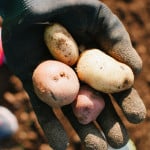
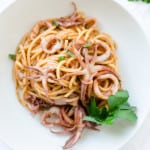


Loved your article. My father was Triestino and we ate gnocchi di susini every September for my birthday. We ate it as an entree but my mother always made a comment to any guest , “ well it really is more like a dessert…” It will always remain an important tradition in my family!